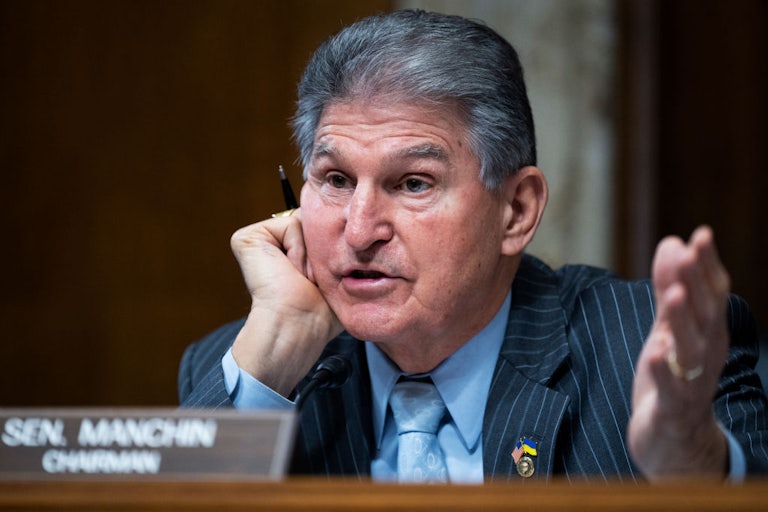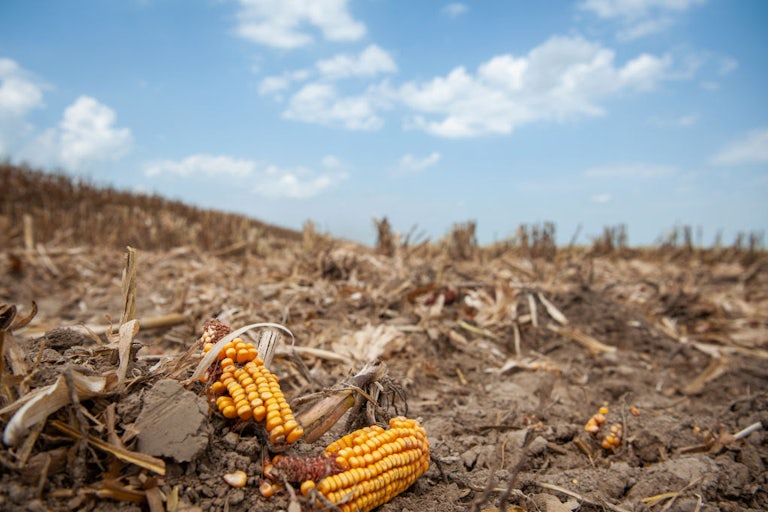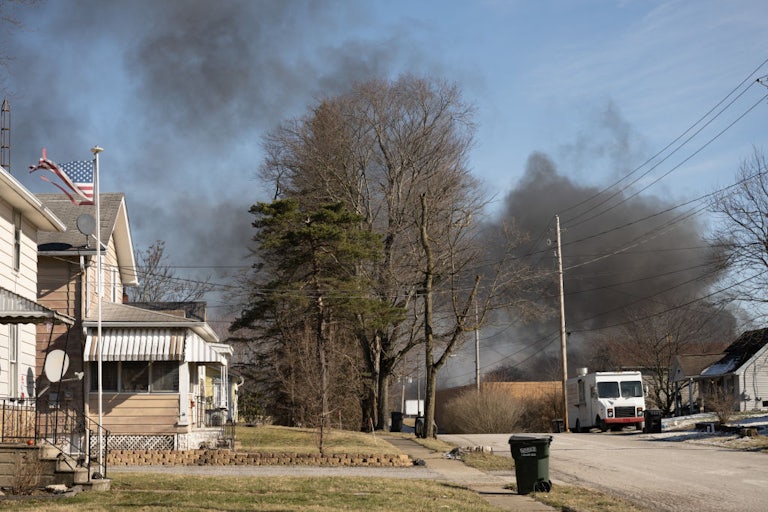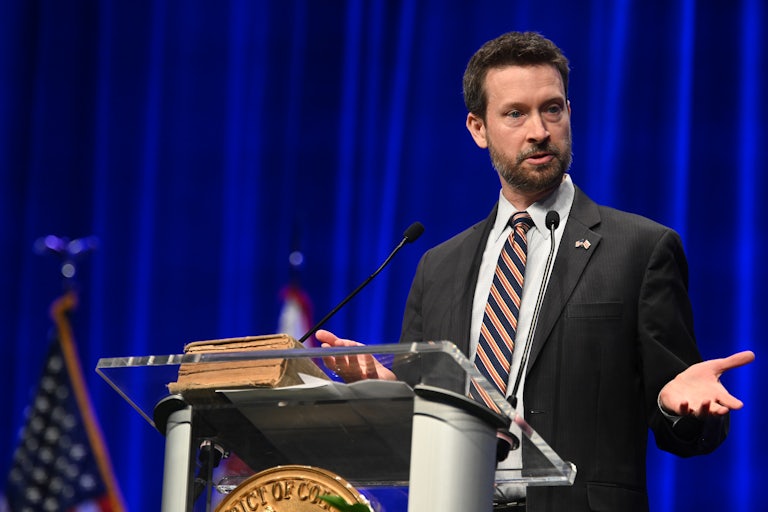Fight Climate Change by Doing Less
Resist the misconception that sustainable living means more work.

Two weeks ago, I promised this newsletter would have more to say about the emotional sustainability of climate coverage and climate activism—which seems to be a theme of late. In the wake of the most recent U.N. climate report, for example, several prominent voices in the climate space have returned to the question of how to frame climate news optimistically, so that people don’t feel too overwhelmed.
In a world where fossil fuel executives, meat megacorporations, and the like possess vastly more wealth and power than activists, tone probably isn’t the primary challenge in climate communication, as Kate Aronoff argued last week. At the same time, it’s true that sustainability continues to have the reputation of being a lot of work. And that’s a fascinating conundrum—because despite the plethora of popular articles promising five, 10, 12, 20, 22, 40, 58, or 101 ways to live more sustainably and fight climate change, a lot of the easy answers about how to live more sustainably involve doing less.
Four years ago, climate writer Mary Annaïse Heglar penned a classic essay at Vox about being tired of people confessing their environmental sins to her. Too often, she wrote, people feel they need to “convert to 100 percent solar energy, ride an upcycled bike everywhere, stop flying, eat vegan,” or else they’re bad environmentalists. “And all this raises the price of admission to the climate movement to an exorbitant level, often pricing out people of color and other marginalized groups.” Personal action isn’t irrelevant in the fight for a livable future, she wrote, but it’s not the best place to focus one’s efforts, particularly if people then get overwhelmed and stop at the personal—neglecting to vote for robust climate policies because they’re so busy trying to find a place to recycle those pesky plastic bags.
A lot of people clearly feel sustainable living means doing more: taking more time to sort recycling or buying special reusable containers, sourcing clothes from thrift shops or researching the most sustainable varieties of seafood. A lot of people also want guidance about how to live more sustainably (how to have a more sustainable yard, for example, was one question I recently heard raised in a meeting) but feel intimidated by the amount of work it might require (killing off your grass and installing a bunch of native plants is pretty daunting for nongardeners).
But let’s take that sustainable yard question as a good case study. Sure, there’s a case for killing off your grass, planting a meadow of native plants, as The New York Times recently urged to ward off the insect apocalypse, or even adding a frog pond, as Emma Marris suggested at The Atlantic. But if you’re not ready or equipped to do that, there really is one easy trick to make your yard more sustainable: Do less. Mow it less frequently—the estimates on emissions from gas-powered lawn mowers vary, but all of them are staggering (greater than a car operating for an equivalent amount of time), and longer grass is more hospitable to insects and other wildlife anyway. Apply pesticides or herbicides less frequently—the runoff is terrible for watersheds (in fact, that might be an easier way to help amphibians than installing a frog pond). If you’re in a water-strapped part of the country, water it less frequently.
Greater effort doesn’t necessarily mean greater environmental friendliness. This holds for so many other things as well, like clothes shopping. Donating your clothing or looking for sustainably produced labels has some serious limits, as recent reporting on the deluge of unused clothing donations and greenwashing of the fashion industry has shown. The real way to dress sustainably, as a growing number of experts acknowledge, is simply to buy less. The real way to make your commute more sustainable may not be to spend hours researching and then financing the latest e-bike, but to work less—by pushing for a four-day workweek, as Kate wrote about last year.
You’d think that this would be a popular “solution” in a world where people are always bemoaning how little time they have, how little cash they have, how bad inflation has gotten. Yet “do less” isn’t always what people want to hear. Perhaps that’s because “do less” has a hint of austerity to it or because doing less may require swimming against the flow of a culture obsessed with aesthetics. Try doing or not doing anything remotely unorthodox with your lawn in a neighborhood with a neurotic homeowners’ association, and see how that goes. (Although, that being said, this Maryland couple sued those bougie troglodytes and won, so there’s hope.) Buying fewer clothes means ignoring the pressure to engage in competitive social signaling.
Yet it’s worth remembering that it’s precisely this culture of aesthetics over substance that the corporations driving climate change have relied on again and again: by championing the idea of a personal “carbon footprint” in the first place, to make people feel guilty about their own lifestyles instead of questioning fossil fuel companies’ culpability; by marketing gas stoves as a lifestyle upgrade or plastics as convenient and more pleasant to use; by trend-churning to force seasonal purchases; and a multitude of other examples.
If individual consumers are going to take on the task of fighting all this, perhaps the least they can do for themselves is—instead of adding 20 items to their to-do lists and shaming themselves for falling short—choose the path that saves them time and money, by rejecting the cult of aesthetics in the first place. There’s beauty in that too.
Good News
Renewable electricity generation surpassed coal in this country for the first time in 2022, the U.S. Energy Information Administration reports.
![]()
Bad News
Over a year after Russia’s invasion of Ukraine catapulted heat pumps and home insulation to the top of the Western European political agenda—to save on winter fuel—an independent report has found that the United Kingdom only “stuttered further” in 2022 on its path to energy efficiency. The chair of the independent commission blamed insufficient funding and an overreliance on “low-stakes incremental changes” and called for bolder policies. “The risk of delay in addressing climate change,” he said, “is now greater than the risk of over-correction.”
Stat of the Week
That’s the degree to which stricter limits on fine-particulate-matter air pollution could reduce mortality rates among older Black and low-income people in the U.S, according to a new study. Read the New York Times write-up here.
Elsewhere in the Ecosystem
Slate has a pretty wild story this week about the Christian relief organizations that are stepping up to the plate to help communities recover from climate disasters when the Federal Emergency Management Agency fails to get the job done (unfortunately a frequent occurrence, due to persistent underfunding):
The Christian relief organizations that have stepped in as first responders—with little oversight—are diverse, spanning from well-intentioned community churches with decades of goodwill to billion-dollar evangelical charities that use far-right outrage to fundraise and take advantage of disaster to spread their gospel.
The overwhelming majority of these organizations’ on-the-ground volunteers serve out of genuine compassion. But some of the country’s largest disaster charities are helmed by far-right extremist leaders who encourage volunteers to make proselytization a main part of their mission, bragging in press releases about how many disaster victims “prayed to receive Jesus Christ as Lord and Savior.” For Samaritan’s Purse, that leader is president and CEO Franklin Graham, the evangelical titan who has called Islam a violent religion, compared trans people with pedophiles, and praised Vladimir Putin’s anti-gay policies, saying LGBT people will burn in “the flames of hell.”
Read Nick Aspinwall’s story at Slate.
This article first appeared in Apocalypse Soon, a weekly TNR newsletter authored by deputy editor Heather Souvaine Horn. Sign up here.
.png)

.png)

.png)

.png)


.png)

.png)

.png)

.png)

.png)